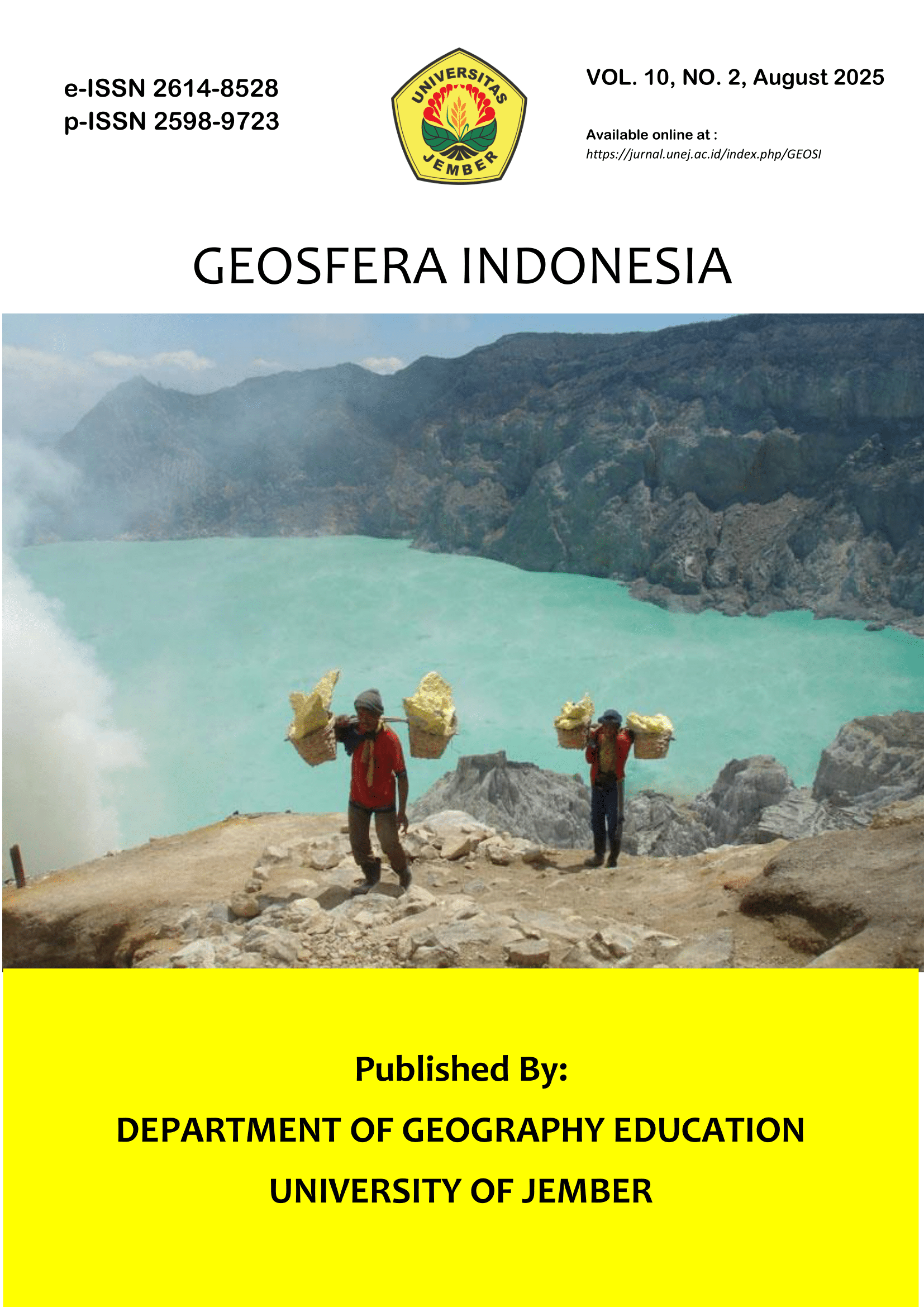Evaluation of Catchment area delineation Methods: Comparison of TOPAZ on WMS with HEC-HMS 4.12
DOI:
https://doi.org/10.19184/geosi.v10i2.53253Keywords:
Delineation, DEM Resolution, TOPAZ, HEC-HMSAbstract
The delineation of catchment areas plays a crucial role in hydrological modeling, influencing water resource management and flood analysis. However, differences in Digital Elevation Model (DEM) resolutions and processing methods can significantly affect the accuracy of delineation results. This study aims to evaluate the differences in catchment area delineation using Hydrologic Engineering Center-Hydrologic Modeling System (HEC-HMS) 4.12 and Watershed Modeling System (WMS) TOPAZ across three DEM resolutions: DEMNAS (8.29 m), ASTER (30 m), and SRTM (90 m). The methodology involves processing DEM data using both software tools, comparing catchment area, main river length, and basin length derived from each resolution. The analysis reveals that higher DEM resolution results in greater similarity between the two methods. At an SRTM resolution of 90 m, the delineated catchment area is 1474.41 km² (WMS) and 1468.03 km² (HEC-HMS), whereas at an 8.29 m DEMNAS resolution, it is 1462.64 km² (WMS) and 1462.91 km² (HEC-HMS). Additionally, significant differences are observed in the main river length, with 44,368.54 m (WMS) and 34,960.17 m (HEC-HMS) at 90 m resolution, and 58,195.71 m (WMS) and 42,537.38 m (HEC-HMS) at 8.29 m resolution. These findings highlight the importance of selecting an appropriate DEM resolution to ensure accurate and consistent hydrological delineation.
Downloads
Downloads
Published
How to Cite
Issue
Section
License
Copyright (c) 2025 Geosfera Indonesia and Department of Geography Education, University of Jember

This work is licensed under a Creative Commons Attribution-ShareAlike 4.0 International License.




